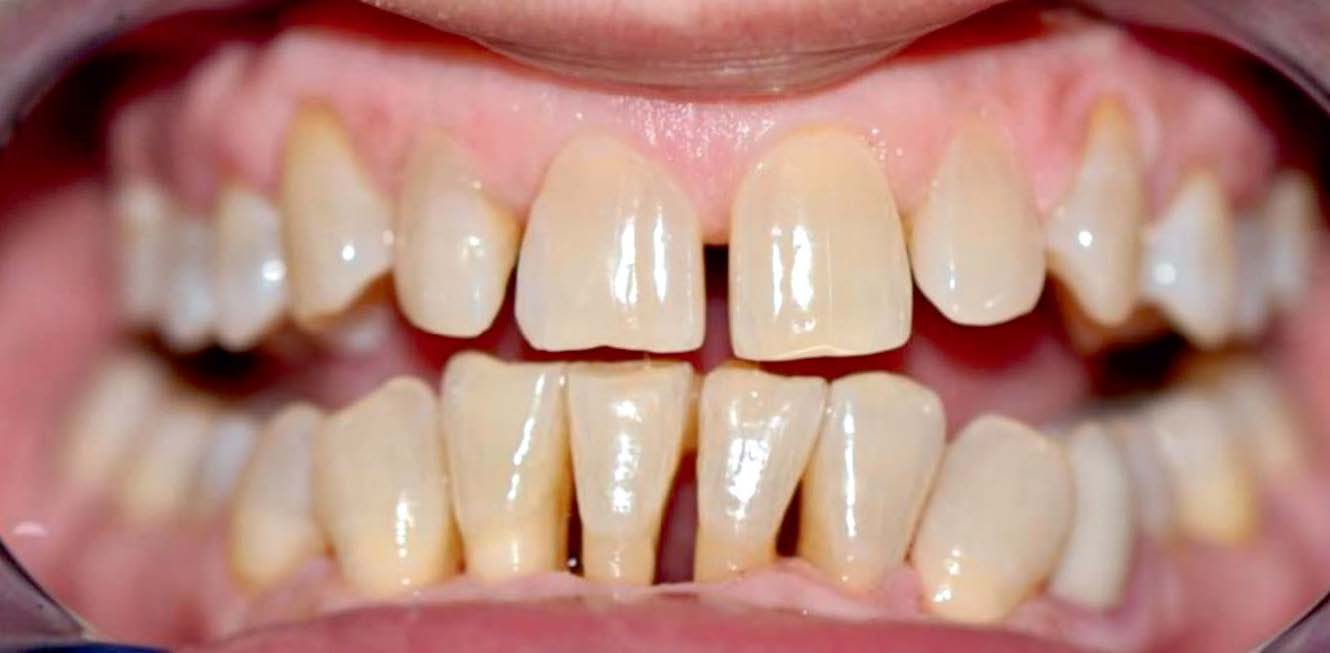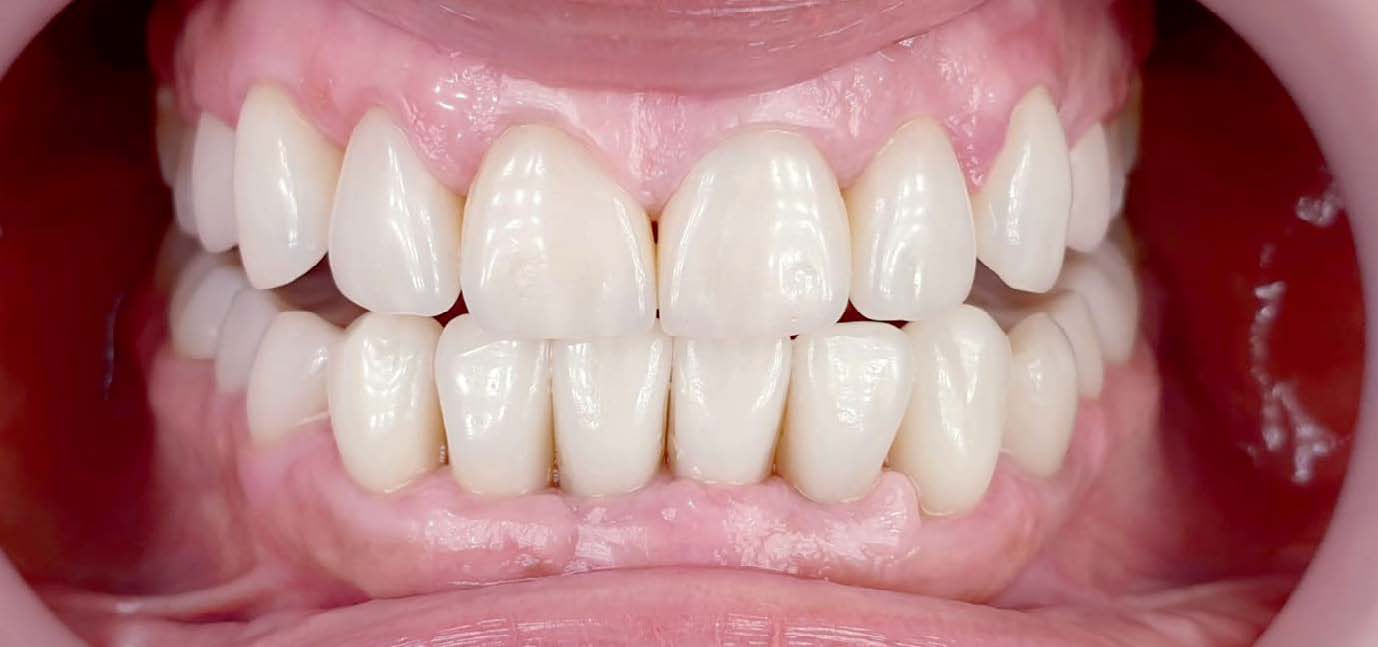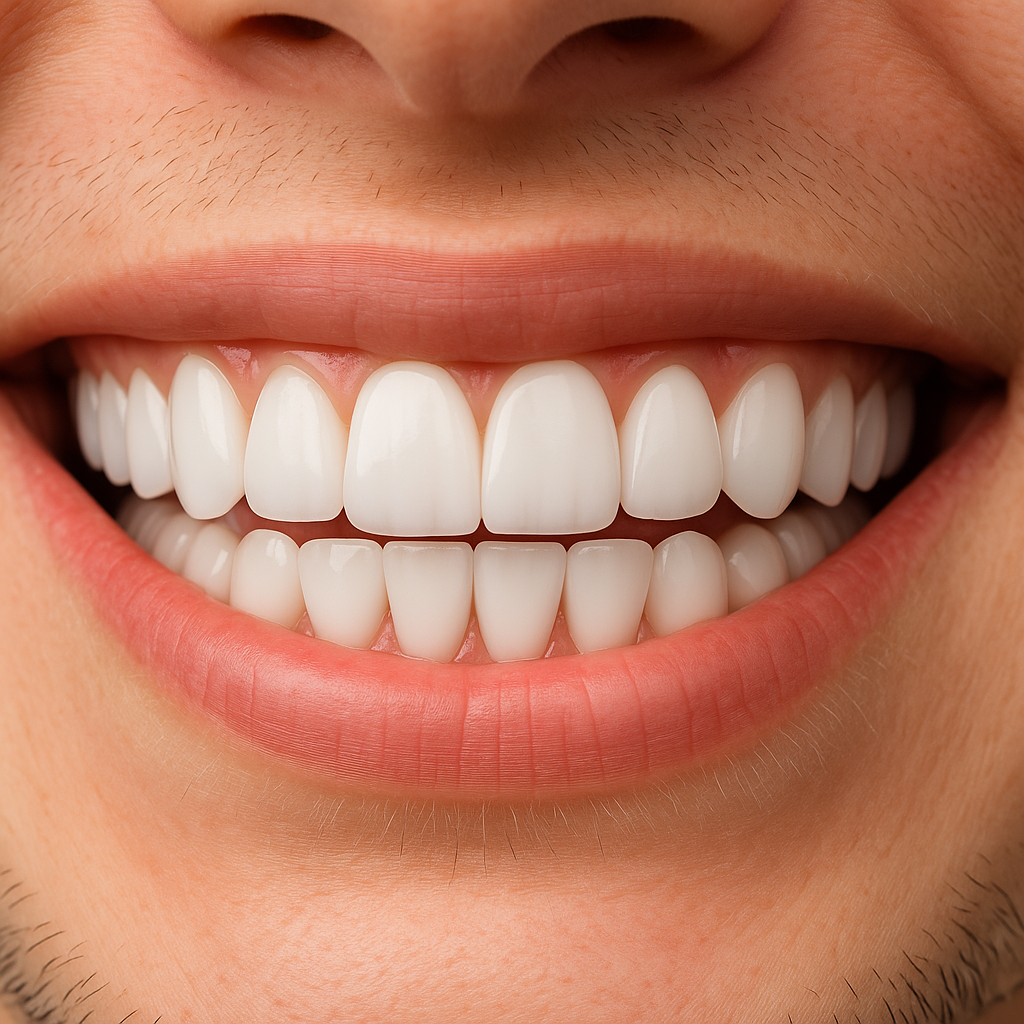Advanced Cosmetic Dentistry
Dental Veneers
Why Choose Dental Veneers?
- Exceptional aesthetics – Achieve a white, uniform, and perfectly aligned smile.
- Minimally invasive – Minimal preparation of the natural tooth, without pain.
- Personalized results – Veneers are specially crafted to match the shape and color of your smile.
- Correction of imperfections – Covers stains, chipped, uneven teeth or unsightly gaps.
- Durability – Long-lasting strength with proper oral hygiene.
Dental Veneers
Indications
Dental veneers are one of the most popular modern cosmetic dentistry solutions for patients seeking a harmonious, white, and perfectly aligned smile. They are especially recommended when visible imperfections exist on the front teeth, and the patient desires a noticeable change without invasive treatments.
When are dental veneers indicated?
- Stained or deeply discolored teeth – when teeth whitening is no longer effective, veneers efficiently cover stains caused by fluorosis, antibiotics, or enamel aging.
- Chipped, cracked, or worn teeth – especially for individuals who grind their teeth (bruxism) or have suffered minor trauma.
- Diastemas (gaps between teeth) – veneers can close gaps without braces and without excessive tooth reduction.
- Uneven or short teeth – they even out the appearance of dental arches and create a balanced smile.
- Mild dental misalignments – they can replace minor orthodontic treatments when the patient prefers not to use braces.
- Unattractive or insecure smile – patients who avoid smiling due to the appearance of their teeth can benefit from a complete, rapid, and personalized transformation.
What type of patients choose dental veneers?
- Professionally active individuals seeking a flawless image
- Young adults or adults who want to improve their appearance without painful procedures
- Patients who have undergone previous treatments (repeated whitening, fillings) and are looking for a durable and aesthetic solution
Types of dental veneers – what are the options and how to choose?
Dental veneers are thin shells applied to the visible surface of teeth to correct aesthetic imperfections and provide a uniform, natural smile. Depending on the material used and the patient’s needs, there are two main types of dental veneers:
1. Ceramic (Porcelain) Veneers
These are the most popular and recommended for major aesthetic transformations. They are lab-made from high-quality ceramic, with an appearance almost identical to natural teeth.
Advantages:
- Superior aesthetics – color, texture, and translucency very close to natural enamel.
- High resistance to stains from coffee, red wine, or smoking.
- Long durability – can last between 10 and 15 years with proper care.
- Biocompatibility – do not irritate gums or cause adverse reactions.
2. Composite Veneers
These are made directly in the dental office, from a composite material similar to that used for fillings, offering a faster and more affordable option.
Advantages:
- Quick procedure – veneers can be applied in a single session.
- Lower cost compared to ceramic veneers.
- Possibility of easy touch-ups and adjustments directly in the office.
🦷 Our recommendation:
If you desire a flawless, natural, and long-lasting smile, ceramic veneers are the ideal choice. If you need a quick and more affordable solution, composite veneers can be an effective option for the short to medium term.


Dental Veneers
Frequently Asked Questions

What are dental veneers and how can they benefit you?
Dental veneers are extremely thin shells made of ceramic or composite, applied to the front surface of teeth to correct various aesthetic imperfections. They are customized according to the shape of the face, tooth color, and patient preferences, providing a natural, harmonious, and elegant smile.
The main benefits of dental veneers include:
- Whitening the smile (correcting permanent stains);
- Correcting the shape and size of teeth;
- Closing gaps between teeth (diastemas);
- Creating a uniform smile appearance;
- Gently correcting tooth alignment without orthodontic braces.
Veneers are not only an aesthetic solution but also a functional one, as they can protect slightly chipped or worn teeth, strengthening them and providing added stability over time.
How long do dental veneers last and what influences their durability?
The lifespan of dental veneers varies depending on the material used, application technique, quality of the work, and the patient’s lifestyle.
- Ceramic veneers (pressed or feldspathic porcelain): can last between 10 and 20 years. They are highly resistant to staining, abrasion, and fractures.
- Composite veneers: have a shorter lifespan, around 5–7 years. They are more affordable but more prone to wear, staining, and fractures.
Factors affecting lifespan:
- Oral hygiene (proper brushing, flossing, mouthwash);
- Avoiding harmful habits (teeth grinding, nail biting, opening packages with teeth);
- Regular dental visits (every 6 months);
- Diet (excessive consumption of acidic or colored beverages can affect veneer margins).
With proper hygiene and regular check-ups, veneers can look flawless even after 15 years.
Is the procedure painful? What are the steps involved in dental veneer treatment?
Generally, the procedure is minimally invasive and not painful. It is performed under local anesthesia, and patients do not feel any pain during the preparation or application of the veneers.
Treatment steps include:
- Initial consultation: The dentist evaluates the condition of the teeth, gums, and bite, discusses the patient’s desires, and establishes the treatment plan;
- Mock-up (preview): A simulation of the future smile is created directly in the mouth without any tooth reduction, using temporary materials. This allows the patient to see the final result before the actual treatment begins;
- Preparation: The superficial layer of enamel is gently shaved only if necessary;
- Impression: A digital or traditional impression is taken to create customized veneers;
- Temporary application: The patient wears temporary veneers until the final ones are made;
- Final cementation: After validating the shape, color, and functionality, the permanent veneers are cemented with a special adhesive.
The patient may experience slight temporary sensitivity in the first few days after treatment, but this usually subsides quickly.
Is tooth preparation necessary for veneers?
In most cases, yes – but the preparation is minimal and controlled. Only a fraction of the enamel (0.3 – 0.7 mm) is removed to ensure the veneer fits perfectly without adding excessive bulk.
However, there are also “no-prep” or “minimal-prep” options, which are very thin veneers (0.2 mm) that require little to no tooth preparation. These are suitable for patients with small, recessed teeth or for minor aesthetic corrections. The choice of technique depends on the case and is determined together with the dentist.
Can veneers come off or break? What happens in such cases?
Ceramic veneers, once properly applied, have excellent adhesion and rarely come off. However, in exceptional cases (trauma, severe bruxism, harmful habits), a veneer may crack or partially detach.
In such cases:
- The veneer can be reapplied if it remains intact;
- If fractured, it can be replaced with a new one;
- Discomfort is minimal, and aesthetics can be quickly restored.
The dentist may also recommend a night guard in cases where the patient grinds their teeth (bruxism).
Do dental veneers stain over time? Do they need whitening?
Ceramic veneers are highly resistant to staining, being smooth and non-porous. They do not absorb pigments from foods or drinks. Therefore, whitening is not necessary – in fact, professional whitening has no effect on ceramic veneers.
Composite veneers, on the other hand, are more porous and may undergo color changes over time, especially if the patient frequently consumes coffee, tea, red wine, or smokes.
To keep veneers impeccable:
- Regular professional cleaning is recommended (scaling and professional polishing);
- Avoid excessive consumption of highly pigmented foods and beverages;
- Do not use abrasive toothpastes or unauthorized whitening products.
Who is an ideal candidate for dental veneers? Are there any contraindications?
An ideal candidate for veneers is someone who:
- Has healthy teeth, free of cavities or active infections;
- Maintains good oral hygiene;
- Has no severe gum disease;
- Wishes to enhance the appearance of their smile (shape, color, alignment).
Contraindications may include:
- Untreated severe bruxism (teeth grinding);
- An incorrect bite that places excessive stress on the veneers;
- Active tooth decay or lack of adequate healthy tooth structure;
- Poor compliance with dental recommendations.
The dentist will conduct a thorough assessment and recommend the best option: veneers, crowns, orthodontic treatment, or a combination of these.
How should dental veneers be cared for after placement? Can they become damaged?
Caring for veneers is simple but essential to keep them beautiful and functional for many years.
Maintenance recommendations:
- Brush twice a day with a soft-bristled toothbrush and non-abrasive toothpaste;
- Use dental floss or a water flosser to clean the spaces between your teeth;
- Dental check-ups every 6 months for examination and professional cleaning;
- Avoid hard foods, opening packages with your teeth, and nail-biting;
- For bruxism – wear a protective nightguard;
- Avoid acidic whitening products that can affect the margin between the veneer and the tooth.
A well-maintained veneer will not fail. In rare cases, it may require polishing or replacement after 10–15 years, but its natural appearance and integrity can be easily preserved.

Schedule a visit with
Dr. Ciobanu
Do you have an emergency? Quickly complete the form below and access top-quality services tailored to your needs. We continually optimize our processes to offer you a simple and efficient experience.
Спросить ChatGPT

Dental veneers
Prices
We offer the option to pay for the treatment cost in zero-percent installments over six months through Easy Credit.
- Fațete dentare





